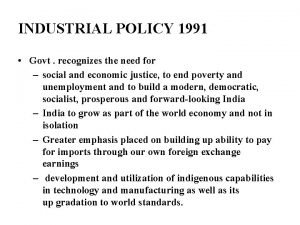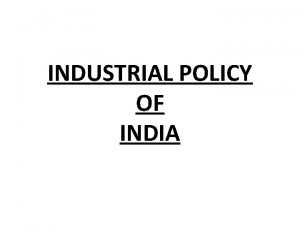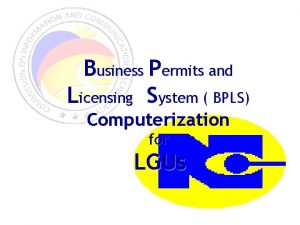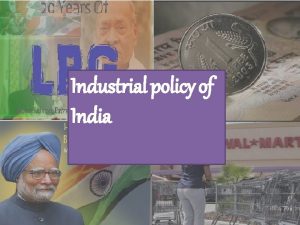THE LICENSING SYSTEM INTRODUCTION Industrial licensing in India




- Slides: 4

THE LICENSING SYSTEM

INTRODUCTION • Industrial licensing in India is governed by the Industries (Development and Regulation) Act, 1951. • In the pre-reforms era, the country practiced a system of industrial licensing under which a license was required before setting up any large industrial unit. • It was thought the licensing system would enable best allocation of the available resources.

• However, the system only led to delay, harassment, lower production and inefficiency. • This led to a change in the mindset and it was realized that in order to have a sustained growth in productivity, enhance gainful employment, attain optimum utilization of human resources, attain international competitiveness and transform India into a major partner in the global arena, industrial licensing policy need to be liberalized.

• Accordingly, the list of items requiring compulsory licensing has been coming down in the past few years. Today, all industrial undertakings are exempt from obtaining industrial license to manufacture, except for • (i) industries reserved for the Public Sector • (ii) industries retained under compulsory licensing • (iii) items of manufacture reserved for the small scale sector and • (iv) if the proposal attracts locational restriction. As regards locational restrictions, it has to be noted that industries located within 25 km. of the periphery of the standard urban area limits of a city with a population of more than one million require a license. This condition, however, does not apply to electronics, computer software, printing and certain other non–polluting industries and units located within designated “industrial areas.






